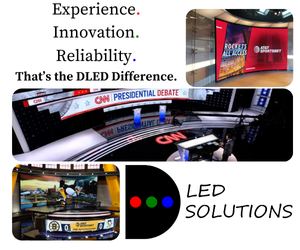Balancing cost and performance in media storage strategies

Subscribe to NCS for the latest news, project case studies and product announcements in broadcast technology, creative design and engineering delivered to your inbox.
As media organizations face pressure to store and manage ever-growing volumes of content, finding the right balance between cost-effective storage and high-performance access has become increasingly critical.
Industry experts reveal that success lies in implementing intelligent storage strategies that combine tiered systems, automated data management and careful consideration of workflow needs.
“The archive can’t be a black hole,” said Derek Barrilleaux, CEO of Projective. “If the archive looks and feels like the primary storage, then both can be optimized and storage costs dramatically reduced without impacting user experience.” Barrilleaux emphasizes that the key is to archive projects as containers rather than individual assets, ensuring efficient organization and accessibility.
The evolution of storage technology has introduced new opportunities for cost optimization.
Intelligent tiering and data management
Modern storage solutions are moving beyond traditional capacity-based pricing models.
Sean Lee, CEO of OpenDrives, notes that broadcasters often turn to deduplication or tiering data management solutions to combat high storage costs, though sometimes at the expense of performance.
“A storage solution that can help broadcasters understand their overall storage consumption, along with how their data is performing in their respective slow and cheap tiered storage locations, automatically, or better yet transparently, can greatly lower the administrative burden,” Lee explained.
The rise of cloud technologies has introduced new approaches to storage management.
David Phillips, senior solutions engineer at LucidLink, observed that while traditional storage management relied on offline archives like tape libraries, “automated storage tiering has emerged as the preferred way to manage cloud storage expenses.” By combining tiering policies with cloud-hosted file services, organizations can achieve both cost-effectiveness and high performance.
Hybrid solutions and practical implementation
Jan Weigner, CTO of Cinegy, advocates for hybrid solutions that blend on-premises and cloud storage for the optimal mix of performance and flexibility.
“Our approach lets customers design different strategies for basic and premium content through storage tiering,” Weigner said. “By automatically moving assets between high-performance and archival storage based on usage patterns, we’re ensuring quick access to hot assets while keeping costs down.”
For media production environments, a single storage system rarely meets all needs effectively.
Whit Jackson, VP of global media and entertainment at Wasabi Technologies, recommends using advanced data management applications to maintain visibility across storage environments.
“Users can then optimize their use of various storages and save on costs by identifying, for example, files that can be moved from a high-performance shared storage system for active creative work to a hot cloud storage tier where the media is still instantly accessible,” Jackson explained.
As file sizes continue to grow and workflow demands evolve, the industry is seeing a shift in how storage solutions are evaluated and implemented.
“The traditional storage practice of charging more for larger capacity and for higher performance is currently being challenged as modern storage solutions disaggregate physical size away from capacity and performance and instead offer value-added data and storage management services,” said Lee.
The key to successful implementation lies in understanding specific workflow needs and patterns.
Laquie TN Campbell, media and entertainment product marketing manager at Backblaze, advises organizations to first assess their needs regarding access, speed, capacity and compliance.
Campbell emphasizes the importance of choosing “storage providers with deep understanding of broadcast workflows and transparent, predictable pricing models, paying special attention to whether they offer low to no-cost egress fees and other cost-saving features.”
As the media industry continues to evolve, the focus is shifting from simple storage solutions to intelligent systems that can automatically optimize both cost and performance. Success in this environment requires careful evaluation of workflow needs, strategic implementation of tiered storage systems and selection of solutions that offer both flexibility and predictable costs.
Subscribe to NCS for the latest news, project case studies and product announcements in broadcast technology, creative design and engineering delivered to your inbox.





tags
Backblaze, Cinegy, David Phillips, Derek Barrilleaux, Jan Weigner, Laquie TN Campbell, LucidLink, OpenDrives, Projective, Sean Lee, Wasabi, Wasabi Technologies, Whit Jackson
categories
Content Delivery and Storage, Media Asset Management